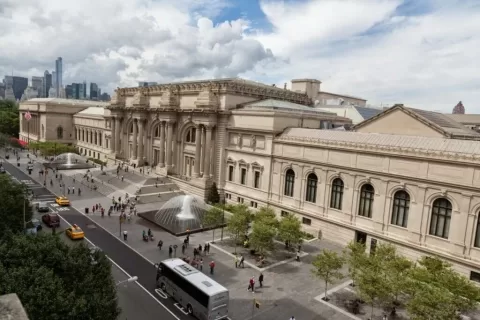Met has released the designs for its new $500 million Tang Wing set to house modern and contemporary art, the new Wing is set to open in 2030.
The Metropolitan Museum of Art in New York is set to transform its modern and contemporary art wing with an ambitious $550 million project designed by Mexican architect Frida Escobedo. Scheduled to open in 2030, this groundbreaking expansion marks a significant milestone for the museum, as Escobedo becomes the first woman to design a wing in the institution’s 154-year history.
The new Tang Wing will dramatically enhance the museum’s ability to showcase 20th and 21st-century art, expanding gallery space by nearly 50 percent and creating over 70,000 square feet of exhibition area. The five-story, 126,000-square-foot wing has been carefully designed to integrate seamlessly with the museum’s existing structure, maintaining the original height of the 1880 central wing.
Max Hollein, CEO and director of The Met, praised Escobedo’s vision, describing her design as “extraordinarily inspired, deeply thoughtful, and dynamic.” He highlighted the architect’s ability to capture both architectural history and the museum’s core mission. The wing represents more than just a physical expansion; it embodies a commitment to artistic expression and visitor experience.
Escobedo herself emphasized the project’s global perspective. “The wing is in New York, yet of the world,” she explained, noting her studio’s goal of creating a space that connects modern and contemporary art galleries while reflecting the collection’s international significance. Her approach prioritizes collaboration and contextual understanding, weaving together the museum’s diverse artistic narratives.
Read also: A $100M FutureVerse Museum planned for Atlanta

Michael C. Rockefeller Wing
In a complementary development, The Met will also reopen the Michael C. Rockefeller Wing on May 31, 2025. This $70 million renovation, designed by WHY Architects in collaboration with Beyer Blinder Belle, will reimagine the museum’s collections from Africa, the Ancient Americas, and Oceania.
The Rockefeller Wing’s redesign breaks from traditional museum practices by displaying objects from these cultures in distinct spaces rather than grouping them together. The renovation will showcase more than 1,800 works spanning five continents, with many objects being exhibited for the first time.
Hollein emphasized the significance of this approach, stating that the new presentation will “further advance the appreciation and contextualization of many of the world’s most significant cultures.” The renovation encompasses more than 40,000 square feet of gallery space, promising a fresh and nuanced exploration of global artistic heritage.
These ambitious projects demonstrate The Met’s commitment to innovation, cultural representation, and architectural excellence. By investing in these transformative spaces, the museum continues to evolve, offering visitors increasingly sophisticated and engaging ways to experience art from around the world.
Read also: 6 Massive Largest museums under construction
The Met expansion- Tang Wing Project
Key Project Details
Project: New Tang Wing
Lead Architect: Frida Escobedo (First woman to design a wing in the museum’s 154-year history)
Total Investment: $550 million
Scheduled Opening: 2030
Wing Specifications:
5 stories
126,000 square feet
70,000 square feet of exhibition area
50% increase in modern and contemporary art gallery space
Read also: Jacksonville’s Museum of Science and History (MOSH) New Riverfront Campus
Other: Michael C. Rockefeller Wing Renovation
Design Team: WHY Architects in collaboration with Beyer Blinder Belle
Total Investment: $70 million
Reopening Date: May 31, 2025
Wing Specifications:
Over 40,000 square feet of gallery space
More than 1,800 works from Africa, Ancient Americas, and Oceania
Innovative display approach emphasizing cultural context
Design for the new Tang Wing at The Met: Key Objectives
Expand and reimagine exhibition spaces
Enhance cultural representation
Create more dynamic and contextual art experiences
Showcase global artistic heritage
Architectural Vision
Seamless integration with existing museum structure
Preservation of original architectural elements
Prioritizing visitor experience and global perspectives

